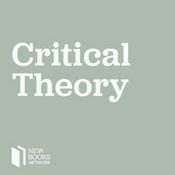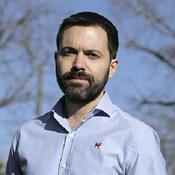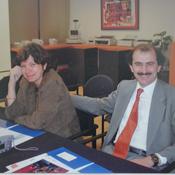Bionic Planet: Reversing Climate Change by Restoring Nature

104 episodios

121 | Michael Greene: Carbon Cowboy or Lone Ranger Part 2 – The $200 Million Land Heist in the Amazon
06/10/2025 | 2 h 26 min
In this episode of Bionic Planet, we finally catch up with Michael Greene — the carbon developer branded a "land grabber of epic proportions" in The Washington Post, and now at the center of an unfolding saga that feels more like a political thriller than a conservation story. When Greene began building carbon projects in the Brazilian Amazon, he didn't expect to end up battling organized crime, corrupt officials, and a $220 million land grab. But that's exactly where the trail has led. You'll hear how a businessman who thought he was protecting forests found himself targeted by powerful interests — his properties invaded using forged documents, his bank accounts frozen, and his reputation attacked by the very institutions meant to enforce the law. Along the way, Greene describes the human cost of the fight — from schools he built that became flashpoints for local politics to community programs twisted by rumor and manipulation. This is a story about how conservation collides with corruption — and how one man's attempt to save forests spiraled into a struggle for survival in one of the most dangerous frontiers on earth.

120 | Indonesia is Still Moving its Capitol, and Nobody Cares?
17/9/2025 | 1 h 25 min
In this episode of Bionic Planet, we delve into the pressing issue of climate change and its profound impact on coastal ecosystems, particularly focusing on blue carbon. We kick off the discussion by highlighting Indonesia's monumental decision to relocate its capital from Jakarta to Borneo due to the city sinking under the dual pressures of climate change and land subsidence. This serves as a stark reminder of the urgent need to address climate change, which is reshaping our world in ways that often go unnoticed. Our guest today is Dr. Steve Crooks, a leading expert in coastal ecosystems and blue carbon. He shares insights into the critical role that mangroves, salt marshes, and seagrasses play in mitigating climate change by sequestering carbon and acting as natural buffers against rising sea levels. We explore the unique characteristics of mangrove forests, which can sequester up to four times more carbon per hectare than traditional forests, and discuss the importance of preserving these ecosystems to combat climate change. Dr. Crooks also provides an overview of the blue carbon system, a term that has gained traction over the past decade. He explains how coastal ecosystems have historically been overlooked in climate discussions, with a predominant focus on terrestrial forests. However, recent developments, including the recognition of blue carbon in international climate agreements like the Paris Agreement, have opened new avenues for conservation and management. Throughout our conversation, we touch on various projects aimed at restoring and managing coastal ecosystems, including the Indus Delta Red Plus mangrove project in Pakistan, which aims to restore 350,000 hectares of degraded mangrove forest. Dr. Crooks emphasizes the importance of using verified methodologies to ensure the success of such initiatives, contrasting them with less rigorous tree-planting efforts that may not yield lasting benefits. As we navigate through the complexities of blue carbon, we also discuss the challenges and opportunities presented by marine protected areas and the potential for mariculture to contribute to carbon sequestration. Dr. Crooks highlights the need for integrated management strategies that consider both adaptation and mitigation in the face of climate change. In the second half of the episode, we take a virtual flyover of the Indus Delta project, where Dr. Crooks shares insights from his experiences and observations. We discuss the delicate balance between local livelihoods and environmental conservation, as well as the importance of community involvement in these initiatives. This episode serves as a call to action, urging listeners to recognize the significance of coastal ecosystems in the fight against climate change and to support efforts aimed at their preservation and restoration. Join us as we explore the interconnectedness of our planet's ecosystems and the vital role they play in creating a sustainable future. Timestamps 00:00:00 - Indonesia's Capital Relocation and Climate Change 00:01:17 - Vulnerability of Coastal Cities 00:02:55 - Importance of Coastal Ecosystems 00:04:10 - The Anthropocene and Climate Change 00:05:38 - Introduction to Dr. Steve Crooks 00:06:52 - The Indus Delta Red Plus Project 00:08:27 - Overview of Blue Carbon 00:09:49 - Support for the Podcast 00:10:02 - Revisiting the Meeting with Steve Crooks 00:12:20 - The Katoomba Meeting and Blue Carbon 00:14:13 - Challenges in the Red River Delta 00:16:09 - Comparing Red River and Indus Delta Projects 00:17:40 - Focus on Oceans at COP25 00:20:28 - Emerging Concepts in Blue Carbon 00:22:08 - Mangrove Carbon Storage Dynamics 00:24:38 - Differentiating Coastal Ecosystems 00:30:10 - Impact of Thawing Peatlands 00:32:08 - Carbon Storage in Coastal Ecosystems 00:35:17 - Lateral Movement of Carbon 00:40:23 - Interventions in Coastal Ecosystems 00:43:56 - NDCs and Blue Carbon Integration 00:50:45 - Virtual Flyover of the Indus Red Plus Project Quotes "Indonesia is literally moving its capital out of Jakarta." - 00:00:11 "Mangroves are coastal woods, like those in Florida's Everglades, Kenya's Ghazi Bay, and all along the coasts of Indonesia." - 00:02:02 "Saving mangroves is key to reversing climate change." - 00:03:37 "Earth. We broke it, we own it. And nothing is as it was." - 00:04:47 "The emissions part of the curve is much steeper than what it is the gradual sequestration under a natural system." - 00:28:10 "Mangroves account for something like 0.7% of all forests, but at 1.10% of all emissions associated with deforestation came from mangroves." - 00:29:45 "Coastal ecosystems are a continuum, and it's a mosaic of habitat that goes down from the terrestrial." - 00:30:10 "If we don't deal with keeping things, temperatures under control, we're just going to have this massive outflow of both methane as the soils warm." - 00:33:05 "The first thing we can do is manage them more holistically." - 00:41:58 "The important thing is to continue to make progress." - 00:50:35

119 | Blue Carbon Pioneer James Kairo on How Mangroves Combat Climate Change: First of Three Parts
02/9/2025 | 1 h 25 min
Like what you hear? Support us at patreon.com/bionicplanet. Today's guest, Blue Carbon Pioneer James Kairo, brings us into the fascinating world of mangroves and their immense economic and ecological value. Our journey begins with a brief overview of mangroves, which, despite covering only 0.01% of the sea surface and just 1% of Kenya's land area, play a crucial role in carbon sequestration and coastal protection. I had the privilege of recording this episode on location at the world's first blue carbon project, Makoko Pomoja in Gazi Bay, Kenya. This project not only aims to restore degraded coastal areas but also emphasizes the importance of education and community engagement in conservation efforts. Throughout our conversation, Dr. Kairo highlights the multifaceted benefits of mangroves, including their role in shoreline protection, habitat provision for marine life, and their capacity to capture and store carbon dioxide. He explains how mangroves can sequester carbon at rates significantly higher than terrestrial forests due to their unique growing conditions in anoxic environments. We also discuss the challenges faced by mangrove ecosystems, particularly the pressures of climate change, over-exploitation for wood, and the impacts of shrimp aquaculture. Dr. Kairo emphasizes the need for innovative solutions that allow communities to benefit from mangroves without degrading them. This includes alternative livelihoods such as ecotourism and sustainable fishing practices. As we explore the concept of blue carbon, we touch on the importance of scientific research and data collection in demonstrating the value of mangroves. Dr. Kairo shares insights into the methodologies used to measure carbon sequestration and the significance of community involvement in carbon trading initiatives. In addition to Dr. Kairo, we are joined by Basco Juma, a Kenyan social entrepreneur and founder of the NGO Big Ship, who shares his experiences in promoting sustainable practices and community engagement in mangrove conservation. Together, they illustrate the collaborative efforts required to protect these vital ecosystems and the potential for scaling similar projects in other regions. As we wrap up the episode, we reflect on the broader implications of blue carbon initiatives for climate change mitigation and the importance of integrating local knowledge and community needs into conservation strategies. This episode serves as a powerful reminder of the critical role that mangroves play in our environment and the urgent need to protect them for future generations. Join us as we embark on this enlightening exploration of mangroves, blue carbon, and the innovative solutions being implemented to safeguard our planet's coastal ecosystems.

118 | Kenyan Herders Say Judgement Against Them Based on Forged Signatures / Continuation of Episode 117
24/5/2025 | 1 h 2 min
In this episode of Bionic Planet, we continue our dive into the complex and often contentious world of community conservancies in northern Kenya, focusing on the Biliqo Bulesa and Cherub Community Conservancies. The episode opens with a powerful statement from community members, emphasizing that the ongoing legal battles surrounding these conservancies are not about the interests of the community but rather the agendas of a few individuals. We introduce Mustafa Mohamed Libin, a community member from Biliqo Bulesa, who shares the story of how his community took bold steps in 2007 to form a conservancy that is truly community-run, contrasting it with the historical context of land ownership in the region. The episode highlights the positive impacts of the conservancy, including the revival of traditional grazing practices and the introduction of carbon finance to support community initiatives. However, the narrative takes a darker turn as we discuss the backlash faced by the conservancies, particularly following a report from the Oakland Institute that accused the Northern Rangelands Trust (NRT) of various human rights abuses. We explore the subsequent media frenzy that ensued, often lacking proper fact-checking and failing to consult actual community leaders. The episode serves as a follow-up to episode 117, providing deeper insights into the crisis faced by the community and the urgent need for their voices to be heard. Throughout the episode, we hear directly from community members, including youth representatives and conservancy leaders, who express their concerns about the recent court ruling that deemed the conservancies illegal due to alleged lack of consent. They recount their shock at the judgment, which they claim was made without their knowledge or participation, and discuss the significant benefits the conservancies have brought to their lives, including access to education, healthcare, and economic opportunities. The community members passionately defend the conservancies, asserting that the allegations made against them are unfounded and that the real beneficiaries of the conservancy are the local people. They highlight the transformative impact of the conservancy on women's empowerment, youth engagement, and community development, emphasizing that the conservancy is a lifeline for their livelihoods. As the episode progresses, we address the misconceptions propagated by external organizations and the media, which often portray the conservancies in a negative light. The community members clarify the differences between community-run conservancies and private conservancies, asserting their ownership and the positive changes that have occurred since the establishment of their conservancy. In closing, the episode underscores the importance of community voices in the narrative surrounding conservation efforts. The community members call for transparency and engagement from external organizations, urging them to visit and understand the realities on the ground rather than relying on hearsay. This episode is a powerful testament to the resilience of the Biliko Bulesa and Cherub communities and their unwavering commitment to protecting their rights and livelihoods amidst external challenges. If you find this kind of truth-telling important, consider supporting our work at patreon.com/bionicplanet. Your support helps us continue to share these vital stories.

117 | Kenyan Pastoralists Cry Foul on Western NGOs, Media. First of two parts
16/4/2025 | 2 h 1 min
In this gripping two-hour episode, we pull back the curtain on misinformation campaigns targeting carbon projects in Kenya's Northern Rangelands. Through interviews with local leaders—including Mohamed Shibia, director of the Northern Rangelands Trust (NRT) carbon program, and elders Peter Lekurtut of the Samboru people and Peter Kilesi of the Maasai—we hear firsthand how traditional grazing systems are being revived and enhanced, not imposed or destroyed. 🎧 Episode highlights: False claims by Survival International and Deutsche Welle (DW) debunked The real story behind grazing plans, fencing, and carbon revenue sharing The complexity of land management among Samburu, Maasai, and other communities Firsthand accounts from the family wrongly featured in the DW documentary How communities are using carbon finance to fund peace, health, and education 💡 What you'll learn: How community-led soil carbon projects work in practice What "planned grazing" really means—and how it strengthens, not replaces, traditional practices Why claims of land grabs, fences, and armed rangers are largely fictional or misunderstood The importance of verifying information and speaking directly with affected communities 🌍 This is the first of a two-part deep dive into one of Africa's most scrutinized carbon projects—and it might change how you think about conservation, climate finance, and indigenous rights. 🔗 Support Bionic Planet: patreon.com/bionicplanet 🎙️ Listen now on Apple, Spotify, or your favorite podcatcher.
Más podcasts de Ciencias
Podcasts a la moda de Ciencias
Acerca de Bionic Planet: Reversing Climate Change by Restoring Nature
Escucha Bionic Planet: Reversing Climate Change by Restoring Nature, Jefillysh: Ciencia Simplificada y muchos más podcasts de todo el mundo con la aplicación de radio.net

Descarga la app gratuita: radio.net
- Añadir radios y podcasts a favoritos
- Transmisión por Wi-Fi y Bluetooth
- Carplay & Android Auto compatible
- Muchas otras funciones de la app
Descarga la app gratuita: radio.net
- Añadir radios y podcasts a favoritos
- Transmisión por Wi-Fi y Bluetooth
- Carplay & Android Auto compatible
- Muchas otras funciones de la app


Bionic Planet: Reversing Climate Change by Restoring Nature
Descarga la app,
Escucha.

































